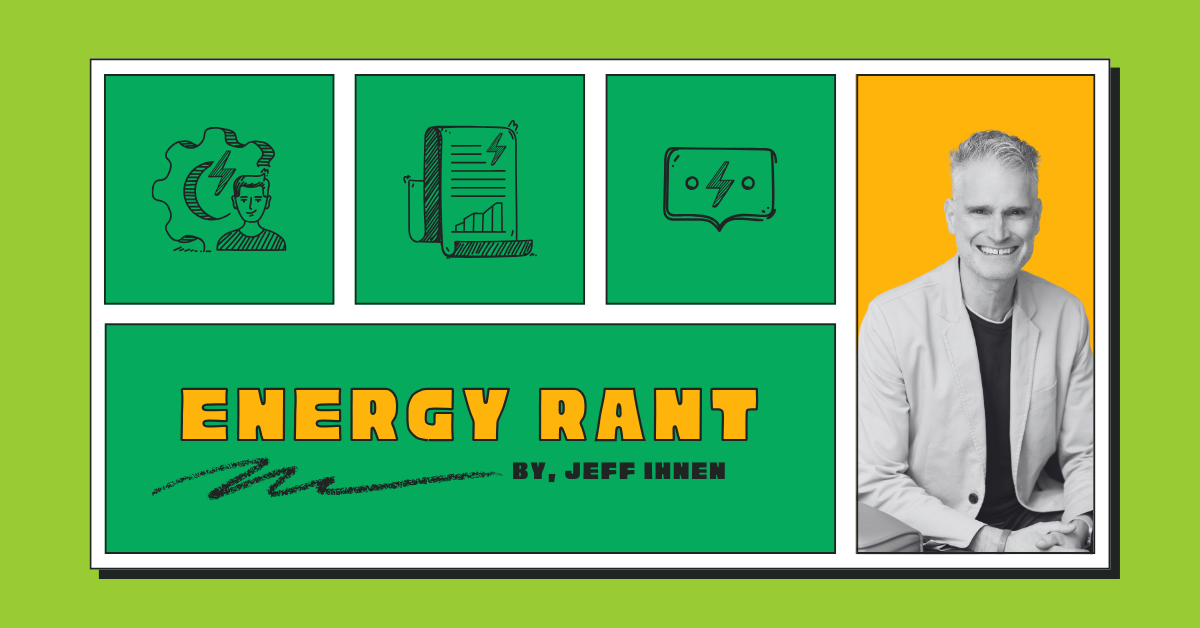
I could not compete with my former self and Gene Simons from last week, but I went back to the Gallup psychoanalysis barrel for more inspiration. I don’t want to write about myself unless it helps you understand why I’m so, uh, peculiar. Like Mr. Simons, I’m an insatiable consumer of information, maybe not books so much – although I’m sure I broke personal records since the Covid – but digital publications, interviews, conference papers, and journals.
The psychoanalysis says, “It’s very likely that you rely, to some extent, on your passion for reading to help you launch conversations. Engaging in small talk or casual chitchat might be difficult.” Bullseye! This is why meeting people at conferences is easier than chatting with relatives during holidays and such. So younger readers: if you find networking challenging or daunting – read and be informed. It doesn’t need to be technical or about the industry.
Next, it says, “Instinctively, you occasionally take advantage of opportunities to acquire knowledge.” I do a lot of this, and at the end, I may be asked, did the __ (webinar, training, presentation, etc.) meet your expectations. Answer: no. I didn’t have expectations. I have an open mind. I “might distance [myself] from people who refuse to expand their minds.” Don’t confuse open-mindedness with indecisiveness and no opinion, but it is necessary to listen effectively, learn, and understand where folks are coming from.
I love pithy and brilliant quotes. The above reminds me of one of Mark Twain’s quotes: “Whenever you find yourself on the side of the majority, it is time to pause and reflect.”
When I read that the first time, my immediate reaction was to take it a step further: When I find myself in the majority, I must have missed something.
Let us continue and conclude with what we started last week for the Performance-Based Program models from Alliance to Save Energy’s Active Efficiency Collaborative. Their forum is next week, December 2, 2020.
#4 Add Efficiency to Renewables, Electrification, and Demand Response
The next recommendation is to include efficiency with renewable energy, electrification, and demand response in programs targeting demand flexibility. I disagree with the wording as an IQ question would suggest to me that only demand response offers demand flexibility among those items.
Demand response is a huge category that includes variable pricing, such as seasonal, time-of-use, and hourly rates. It also includes interruptible rates where customers are paid to shed loads, whether it is via direct load control by remotely opening breakers or by changing operating parameters, such as speed, flow, or temperature for various equipment.
I’m entirely on board with this recommendation, as we need to manage load shapes as much or more than save kWh.
#5 Decarbonization
The next recommendation is similar to the previous, recommending integrating renewable energy, efficiency and demand flexibility. My only comment on this one is to consider efficiency and demand management as alternatives to piling on more renewable energy. Think of it this way: efficiency and DR stabilize the grid while piling on more renewable supply goes the other way. We want to make this profitable or at least revenue-neutral for utilities. That will be the subject of a future Rant.
#6 Non-Energy Benefits
The primary objectives of efficiency and demand management programs have been fuel-use reduction and avoided cost of more generation, transmission, and distribution systems. Fuel costs have dropped rapidly using cheaper natural gas as a fuel, and with growing percentages of fuel-free renewable energy. So let’s add some other benefits!
The trouble is realistically putting dollar values on non-energy benefits. For instance, last spring, I set out to clean my windows, which are about as clear as a frosted mug, at least when the sun hits them at a certain angle. They have a storm window in addition to old double-glazed sashes. I couldn’t get the storms off without the risk of them crashing to the ground in a billion pieces on my washed rocks. “That’s it,” I thought. I can’t clean these damn things, and they whistle when it’s windy. Time for new windows! (see what I mean about no indecisiveness?)
Do I get “credit” for energy savings from Focus on Energy? Pfft! No. What is the dollar value of clean glazing, comfort, appearance, and a 70% reduction in energy loss?
Ouija board, Ouija board, Ouija board, would you work for me?
 #7 Use Standardized M&V Methods
#7 Use Standardized M&V Methods
Standardizing measurement and verification (EMV or M&V) methods across the country is never going to happen. Some jurisdictions are huge and can afford “best practice” 90/10 sampling five ways to Monday, but many places have small budgets where an evaluation per the standardized gospel would cost more than their entire portfolio budget. Corners need to be cut to get less accurate 90/10 results. It’s simply reality; no one is to blame.
However, I vociferously agree with the recommendation to take actual savings rather than net savings to measure success. Put out your hands waste high and shake your wrists and fingers. That’s their recommendation for what to do with net savings. Play with that somewhere else.
#8 Long-Term Financing
Long-term financing is a nice bookend to this two-post series. It circles back to performance contracting, #2 from last week. Combined with #1, simplify, just let utilities finance projects at their weighted cost of capital and declare victory (along with evaluation).
I must give credit to entities for developing power purchase agreements for energy not used. It works like this:
- Third-party (ESCO) contracts with a customer to sell efficiency as a service.
- Third-party contracts with utility to sell those savings to the utility at a slightly higher price than the customer pays for savings.
- Fourth party contracts with the utility to verify the impacts.
The problem here is dealing with the counterfactual – what would have happened over many years? Let’s jump to the quick: no one knows.
As discussed last week, project acquisition costs for ESCOs are high, limiting the market to very large, slam-dunk projects only. The utility shaves a razor-thin lower cost for the acquisition. The fourth party verifier, is starved to do a good job on every project.

 #7 Use Standardized M&V Methods
#7 Use Standardized M&V Methods